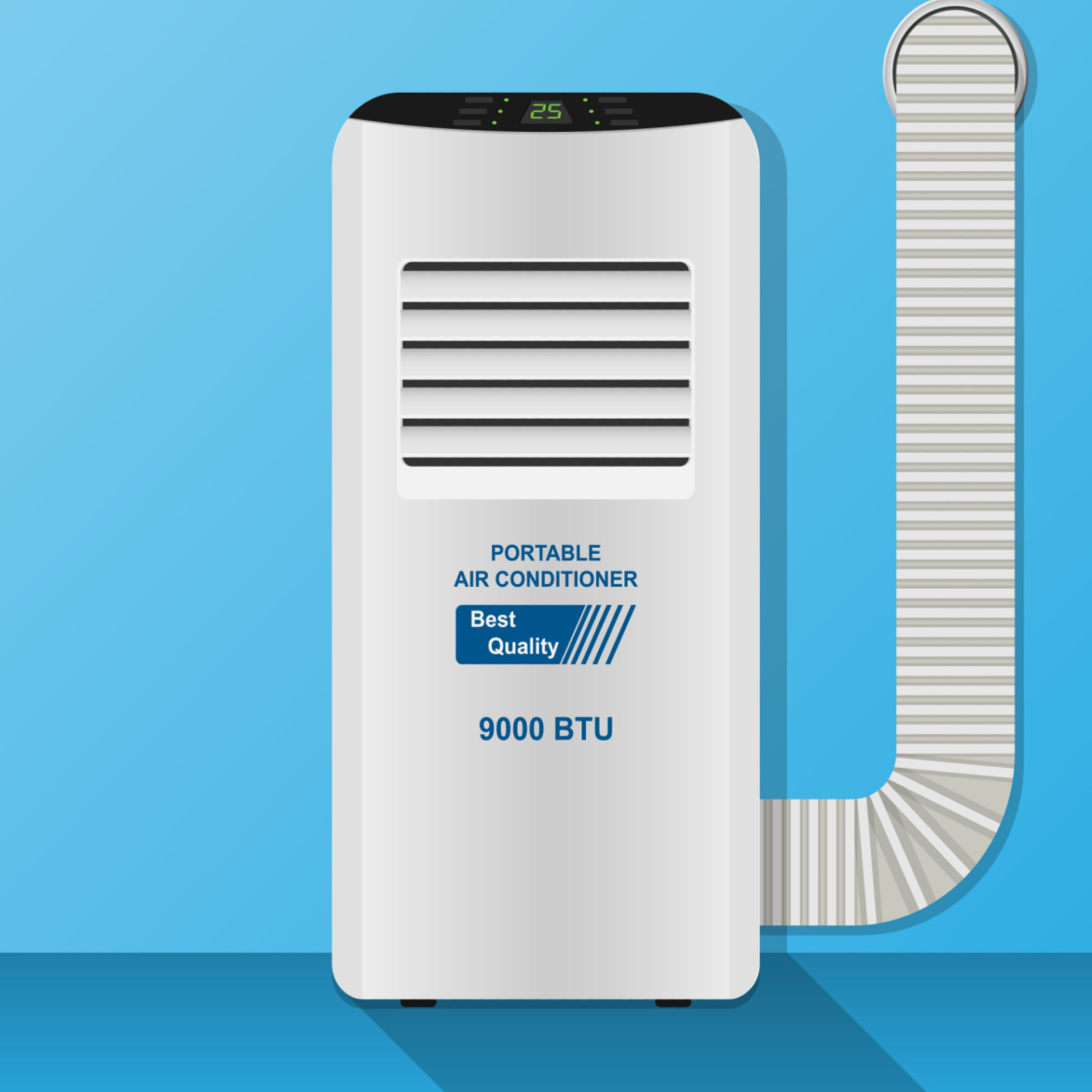The Different Sizes and Types of Portable Air Conditioners

Portable air conditioner sizes
A portable air conditioner is an excellent choice for spaces where your AC won’t reach, like the garage. Also it is great for the guest room or even kitchen.
However, choosing the wrong one won’t cool your room correctly. When you browse for portable ACs, you have probably noticed that each comes with specific BTUs. This important specification is crucial when choosing the right product.
What is BTU and why does it matter?
BTU stands for British Thermal Unit and refers to the amount of energy your AC uses to remove heat within an hour. Each air conditioner comes with an indication on its label with how many BTUs per hour it will move from the air. If an air conditioner has a high BTU, it will remove the heat from the space properly. However, it doesn’t mean that too many BTUs is a good thing. You would want to get the correct number for maximum efficiency. Neither too many nor too little are good options.
When browsing for portable air conditioners, you might go for those with higher BTU as it sounds logical. However, the main point isn’t to get the highest value. Instead, it would be best to get BTU that corresponds to your square footage.
If the air conditioner has a higher BTU than the one needed for your space, a few things will happen. The portable air conditioner will cool the room quicker than it should. However, this isn’t a good practice. The air conditioner will work in various cycles, continuously turning them on and off. The device will work so hard to maintain the temperature, but it won’t manage to remove the humidity.
On the other hand, this practice results in an overworked AC which will end up having a shorter lifespan. The repeated cycles will waste a lot of electricity, so you will have to pay higher bills. And let’s not forget that the unit won’t remove the moisture properly, and your room will feel humid. Consequently, you will spend more money on repairs, bills, and possibly a new unit when the overworked one breaks down.
Just as too high BTU is wrong, too low is also a waste of money. The portable air conditioner will work constantly and still not achieve the desired results. You will end up with an overworked unit, more energy consumption, and a superheated room.
How to choose the right size
A portable air conditioner is ideal for your garage, guest room, kitchen, or any other room that requires cooling. We have already explained what BTU is and why it is essential. In this section, we will get into choosing the optimal cooling capacity for your needs.
When shopping for a portable air conditioner, you should follow this chart:
• Up to 200 Sq Ft 8,000 BTU
• Up to 300 Sq Ft 10,000 BTU
• Up to 400 Sq Ft 12,000 BTU
• Up to 450 Sq Ft 13,000 BTU
• Over 500 Sq Ft 14,000+ BTU
This chart is a guideline for choosing the best portable air conditioner. However, there are a few variables to have in mind. Additional factors such as the ceiling height and sunlight can require more or less BTU for optimal working. It is recommended that you increase the BTU by 10% if your ceiling is higher than eight feet.
If you use the air conditioner in the kitchen, the appliances that release heat can obstruct its cooling power. Therefore, it is better to increase the BTU by 4,000 if you use appliances.
The amount of natural light that the room gets plays an integral part in determining the suitable BTU. South-facing rooms that receive plenty of sunlight during the day will require a portable air conditioner with 10% more BTU. For shaded spaces, you can decrease the amount by 10%.
Types of portable air conditioners
When shopping for a portable air conditioner, you will encounter different types. Each of them comes with its advantages, so opt for the best fit for your specific needs.
Monoblock portable air conditioners
The monoblock portable air conditioners are units that come in one piece. The single unit requires exterior venting, so it comes with an exhaust duct to move the warm air outside. The monoblock models can also come with a dehumidifying feature if you prefer the humidity to be removed. Also, they can come with a timer as an additional feature to turn on cooling at a specific time. The monoblock comes with wheels attached to its base, so you can easily adjust its position.
Split air conditioners
The portable split air conditioners have two working units. The ventilation unit is placed indoors, and the compression unit is mounted outdoors. The internal and external units are connected with a hose, so this portable air conditioner can’t be moved around. However, this unit will produce less noise. Like monoblock units, you can find integrated features such as a timer and dehumidifier. However, keep in mind that split air conditioners tend to cost more.
Self-evaporating portable air conditioners
If you need to cool a small room, the self evaporating units are an ideal choice. However, keep in mind that they can be noisy and might not be suitable for larger rooms.
Final thoughts
This article is to help you get a better understanding of the different types and sizes of portable air conditioners. Also to explain why BTUs are so important and how to estimate the correct number for your needs. Now, you can check the different options and determine which one is the best match.
Blogger, amateur photographer and over stressed time poor Dad who loves household gadgets.



